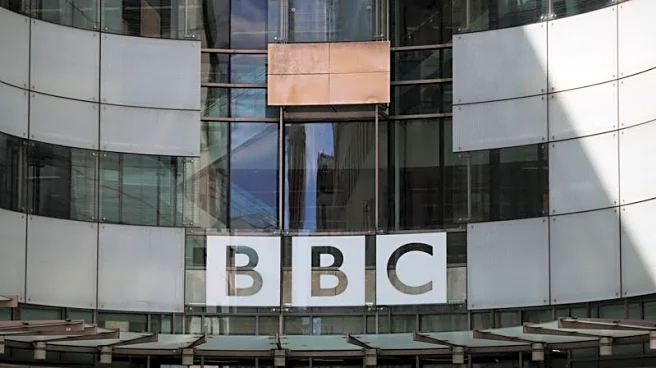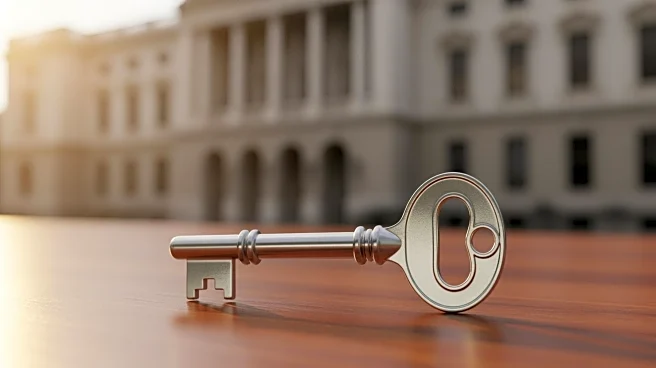What's Happening?
Historic preservationists have filed a lawsuit against President Trump regarding his plans to paint the Eisenhower Executive Office Building, located next to the White House. The DC Preservation League
and Cultural Heritage Partners are seeking to prevent any changes to the building without undergoing a standard review process. The Eisenhower building, completed in 1888, is known for its ornate design and historical significance. President Trump has expressed interest in painting the building bright white, citing aesthetic preferences. Preservationists argue that such changes could cause irreversible damage to the building's granite exterior and result in significant restoration costs.
Why It's Important?
The lawsuit highlights the ongoing tension between historical preservation and modernization efforts within federal properties. The Eisenhower building serves as office space for key government staff, including the Office of the Vice President and the National Security Council. Alterations to such a historically significant structure could set a precedent for future changes to federal buildings, impacting preservation efforts nationwide. The case underscores the importance of adhering to legal processes designed to protect historical sites, ensuring that aesthetic changes do not compromise structural integrity or historical value.
What's Next?
The preservationists are seeking a preliminary injunction to halt any alterations to the Eisenhower building until the court evaluates the case. The legal proceedings will determine whether President Trump can proceed with his plans without undergoing the required environmental and historic preservation reviews. The outcome could influence future decisions regarding federal property modifications and the balance between modernization and preservation.
Beyond the Headlines
The case raises broader questions about the role of personal aesthetic preferences in public policy decisions, particularly when they involve historically significant sites. It also highlights the legal responsibilities of the presidency in adhering to preservation laws, potentially influencing future administrations' approach to federal property management.













